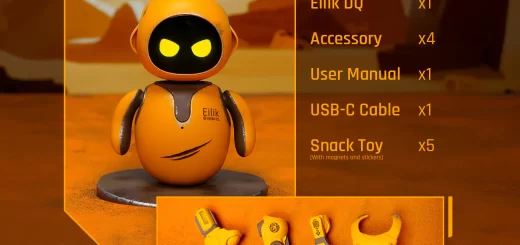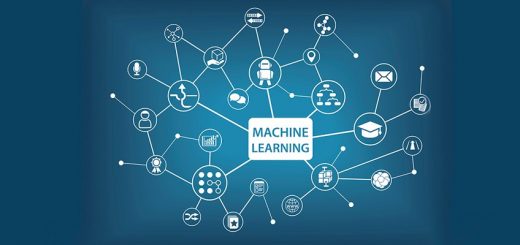Robots types, advantages, uses, features and models (Humanoid, Military, Industrial, Nano-robots)
Robots can be used in the manufacturing industry, the military, space exploration, transportation, and medical applications, The robot is a reprogrammable, multifunctional manipulator that is designed to move things with the help of variable programmed motions, Reprogrammable means the robot is controlled through a computer-based program which can be changed at any time, Multi-functional attribute signifies multiple numbers of applications carried out by a robot.
Types of Robots
Robots are used in education, They are used at home or in classrooms, It comes with hands-on programmable sets, 3D printers with lesson plans, and even teacher robots like EMYS, Robots can be used in entertainment, They are designed to evoke emotional responses and make us laugh or feel surprised or in awe, Medical robots are used in medicine and medical institutions, such as surgery robots.
Consumer robots are the robots you can buy and use just for fun or they can be used to help you with tasks and chores, Robots are used in universities and corporate research labs, they can be called research robots, these robots can do useful things, they’re used to help researchers to research well, Underwater robots are used in the water, and they consist of deep-sea submersibles.
Humanoid Robots
The humanoid robot is a type of robot that replicates the human body, The design of Humanoid robots makes them fairly distinct from the other types of mobile robots, The typical humanoid robot consists of a head, two arms, a torso and two legs just like a human, but many of those robots are based on some part of the human body, like from waist up, They are designed to look like people, and they have a mechanical appearance.
The humanoid robot contains sensors that are from the main components in the humanoid robot and they play a vital role in robotic paradigms, There are two types of sensors which are Proprioceptive and Exteroceptive sensors, The proprioceptive sensors sense the robot’s orientation, position, and other motor skills, while Exteroceptive sensors include visionary and sound sensors.
Military robots
Military robots can be used in military purposes such as law enforcement, and search and rescue fields, Military robots include bomb disposal robots, different transportation robots & reconnaissance drones, they include ground systems like Endeavor Robotics’ PackBot, They are used to scout for improvised explosive devices, and BigDog, They are designed to assist troops in carrying heavy gear, Security robots come with autonomous mobile systems such as Cobalt.
Disaster response robots can perform dangerous jobs such as searching for survivors in the aftermath of an emergency, Drones are known as unmanned aerial vehicles, They come in different sizes and have different levels of autonomy, such as DJI’s popular Phantom series and Parrot’s Anafi, as well as military systems like Global Hawk, used for long-duration surveillance.
Industrial robots
The industrial robot arm can be used in the factory environment for manufacturing applications, Industrial robots can be classified according to different specifications such as type of movement (degrees of freedom), application (manufacturing process), architecture (serial or parallel) and brand, there is a new qualifier for industrial robots that can be collaborative or not.
Robots are created with specific applications or processes, Different applications will have different requirements, The painting robot will require a small payload but a large movement range, The assembly robot will have a small workspace but will be very precise & fast, Depending on the target application, the industrial robot will have a specific type of movement, linkage dimension, control law, software and accessory packages.
They are articulated arms specifically developed for such applications as welding, material handling, painting and others, They are used in an industrial manufacturing environment, There are many industrial robot brands, There are many robots for different applications & at different sizes, The smallest companies usually target a specific size or application range.
Collaborative industrial robots
Collaborative robots can be used in the same environment as humans, They can be taught instead of programmed by an operator, Collaborative robots are made with safety standards, they can’t hurt a human, While traditional industrial robots need to be fenced off away from human co-workers for safety reasons, Collaborative robots such as Rethink Robotics Sawyer & Baxter, Universal Robots UR3, UR5 & UR10, ABB Yumi & KUKA LBR IIWA.
Dual-arm robots are composed of two arms that can work together on a given workpiece, The type of movement is dictated by the arrangement of joints (placement and type) and linkages, Serial robots are composed of a series of joints and linkages that go from the base to the robot tool, and they are common robots.
Redundant robots
Redundant robots can fully position their tool in a given position, But while 6-axis robots can only have one posture for one given tool position, redundant robots can accommodate a given tool position under different postures, This is like the human arm that can hold a fixed handle while moving the shoulder and elbow joints.
Stationary robots
Stationary robots work without changing their positions, “stationary” does not mean that the robot is not moving, and “stationary” means that the base of the robot does not move during operation, Stationary robots can manipulate their environment by controlling the position & orientation of an end-effector, Stationary robot category contains the robotic arms, cartesian robots, cylindrical robots, spherical robots, SCARA robots and parallel robots.
Swarm robots
Swarm robots consist of multiple small robots, These robots structurally do not create a single united robot, but operate as their robot modules operate cooperatively, They are similar to modular robotic systems but the elements of swarm robots have less functionality and herd configurations do not create new robots.
Modular robotic systems
Modular robots are similar to swarm robots, They have multiple robots in their configurations, Modules of these systems are more functional compared to the robotic herd, A single module of the modular robotic system can have self-mobility & it can operate alone, The power of modular robotics comes from its versatility in its configurations.
Flying robots
Flying robots are strong and aerodynamically sound robots, they are the most popular robot types, They can maneuver & float on the air using their plane-like or bird/insect-like wings, propellers or balloons, such as airplane robots, bird/insect-inspired wing-flapping robots, propeller based multi-copters and balloon robots, some big companies are planning to incorporate those automated flying machines into their day to day business.
Micro-robots
Microrobots can be used for robots that can hand micrometer size components, Microbotics is the field of miniature robotics, they are mobile robots with characteristic dimensions less than 1 mm, Micro-robots term is used to specify both robots that have dimensions on a micrometer scale & robots that can operate on micrometer resolution, So, both possibly very big stationary robots that can manipulate their environment on a micrometer scale, small robots that are measured by micrometers are called micro motors.
Nano-robots
Similar to micro-robots nano-robots are also defined a bit vaguely, The term nano-robot both defines very small robots which have nanometer-scaled dimensions and robots that can manipulate their environment with a nanometer scale resolution regardless of their actual sizes.
Telepresence robots
Telepresence robots help you to be present at a place without actually going there, You can log on to the robot avatar via the internet & drive it around, Telepresence robots can see & talk with people, Employees can use them to collaborate with colleagues from a distant office, and doctors can use them to check on patients.
Space robots
Aerospace robots include all sorts of flying robots, the SmartBird robotic seagull and the Raven surveillance drone, Also robots that can operate in space, such as Mars rovers and NASA’s Robonaut, There are many space robots such as robots used on the International Space Station, Canadarm that was used in Shuttles, as well as Mars rovers and other robots used in space.
Domestic robots
Domestic or household robots are used at home, They include many different devices such as robotic vacuum cleaners, robotic pool cleaners, sweepers, gutter cleaners and other robots that can do many chores, some surveillance and telepresence robots can be used as household robots if they are used in that environment.
Soft elastic robots
Soft/elastic robots are new introductions to robotics, They are bio-inspired, Most applications are inspired from squids or inchworms both structurally and functionally.
Exoskeletons robots
Robotic exoskeletons can be used for physical rehabilitation and for enabling a paralyzed patient walk again, Some have industrial or military applications, by giving the wearer added mobility, endurance, or capacity to carry heavy loads.
Murata girl robot
Murata girl or Murata Seiko-chan robot is a type of compact robot that can come in handy in extremely crowded areas, It is a unicycle robot manufactured by the Japanese electronics company Murata, According to the company, she has advanced gyro sensors that enable her to stabilize, a Bluetooth device for communication and an ultrasonic sensor for target detection.
Advantages and disadvantages of using robots in our life
Robot teachers uses, advantages and disadvantages
Automation in manufacturing uses, advantages and disadvantages













